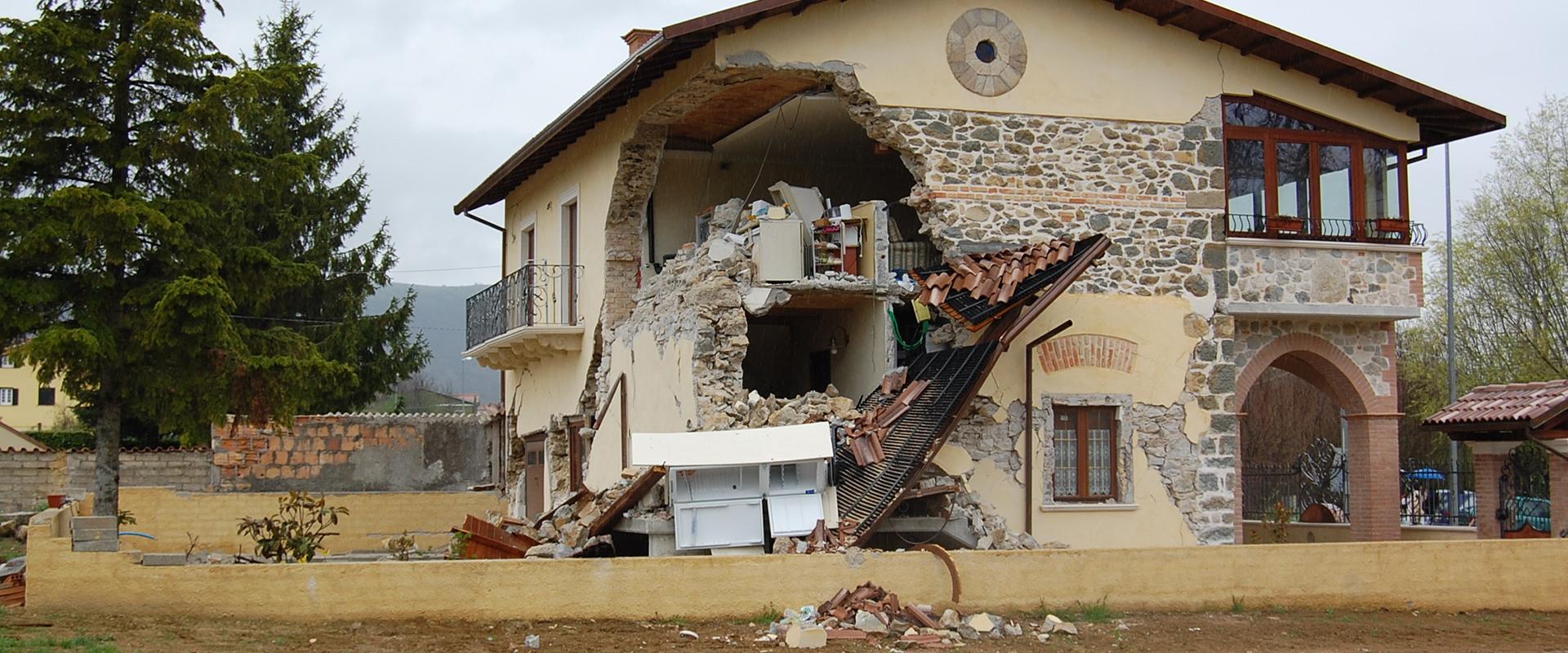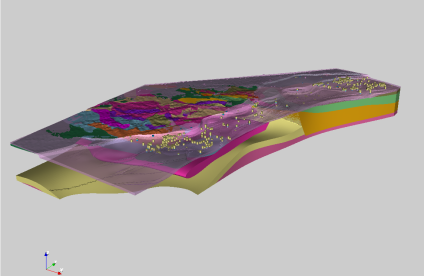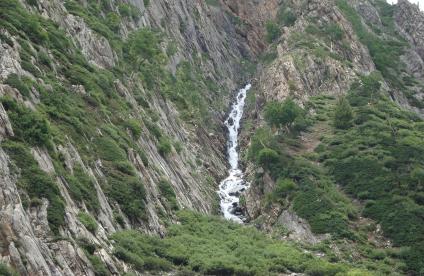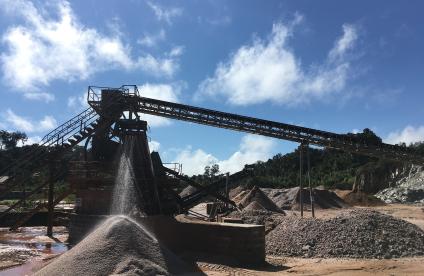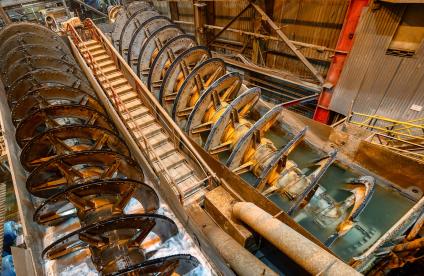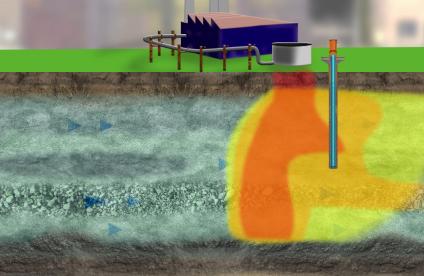3D simulation of a low magnitude earthquake in Greece
The EFISPEC3D open-source code, first developed in late 2009 by BRGM and since then in collaboration with Intel France, executes seismogram calculations in complex 3D geological environments, in order to predict local seismic risks for research projects.
During the 20th century, seismology became a quantitative science developed by significant interactions between explorers, theoreticians and numerical-simulation experts. It comprises a range of disciplines including seismogenesis, seismotectonics and global seismology.
Among these, numerical ground motion prediction aims to quantify local seismic risks by resolving the fundamental equation of motion in three dimensions. The discipline has been developing rapidly since the advent of high-performance computing. It is based on time series recordings of the seismic waves that propagate through the ground.
This quantification of seismic risks is particularly important in moderately seismic zones, as in certain French regions, where sometimes not enough tremors have been recorded to enable empirical predictions of the intensity of ground vibrations.
Numerical ground motion predictions
Ground motion predictions forecast changes in the ground over time caused by seismic waves passing through it. These predictions are made by means of empirical, deterministic or stochastic models.
In the case of deterministic models, the fundamental equation of particle motion in a deformable solid environment is used to calculate changes in the ground over time, caused by the propagation of seismic waves triggered by a fault rupture and travelling up through the Earth's crust to the Earth's surface.
In more complex environments (e.g., curved interfaces or locally heterogeneous ground), numerical methods are essential for resolving the fundamental equation of motion in order to calculate ground vibrations associated with a seismic event. This is what seismologists refer to as numerical ground motion prediction.
The EFISPEC3D open-source code
Among existing numerical methods, the spectral finite elements method, introduced in seismology in the 1990s, is a fast and accurate numerical method for solving the fundamental equation of motion.
Based on this method, the EFISPEC3D open-source code (Éléments FInis SPECtraux 3D - © BRGM), first developed by BRGM in 2009 and since then in collaboration with Intel France, is dedicated to seismogram calculations in complex 3D geological environments, which are used for local seismic risk predictions for research projects or to support public or private partners.
3D simulation of seismic wave propagation in the Bas-Rhin département
Applications in several fields of study
EFISPEC3D has been used in particular in the RGF programme (French Geological Reference Platform) for the RGF Vosges-Rhine Graben demonstrator across a 51 x 38 km study zone, to simulate about 200,000 seismograms generated by an Mw = 5.0 magnitude tremor in a segment of the Rhine fault.
BRGM is also working actively with the E2VP project partners (Euroseistest Verification and Validation Project coordinated by the CEA, ISTerre, AUTH and ILL), to investigate the complexity of seismic wave propagation in the Mygdonia sedimentary basin in Greece.
The EFISPEC3D tool is also designed to support public and private partners. It is a core component of seismic micro-zoning projects that require 3D calculations.
EFISPEC3D has a double licence, CeCILL V2 and GNU GPL V3.
Scientific references
- De Martin, F. (2011). Verification of a spectral-element method code for the Southern California Earthquake Center LOH.3 viscoelastic case. Bulletin of the Seismological Society of America, 101(6), 2855-2865.
- Chaljub, E., Maufroy, E., Moczo, P., Kristek, J., Hollender, F., Bard, P. Y., ...& Chen, X. (2015). 3-D numerical simulations of earthquake ground motion in sedimentary basins: testing accuracy through stringent models. Geophysical Journal International, 201(1), 90-111.
- Matsushima, S., Hirokawa, T., De Martin, F., Kawase, H., & Sánchez‐Sesma, F. J. (2014). The Effect of Lateral Heterogeneity on Horizontal‐to‐Vertical Spectral Ratio of Microtremors Inferred from Observation and Synthetics. Bulletin of the Seismological Society of America, 104(1), 381-393.
- Maufroy, E., Chaljub, E., Hollender, F., Kristek, J., Moczo, P., Klin, P., ... & Bard, P. Y. (2015). Earthquake ground motion in the Mygdonian basin, Greece: The E2VP verification and validation of 3D numerical simulation up to 4 Hz. Bulletin of the Seismological Society of America, 105(3), 1398-1418.
- Trovato, C., Lokmer, I., De Martin, F., & Aochi, H. (2016). Long period (LP) events on Mt Etna volcano (Italy): the influence of velocity structures on moment tensor inversion. Geophysical Supplements to the Monthly Notices of the Royal Astronomical Society, 207(2), 785-810.
- Sochala, P., De Martin, F., & Le Maitre, O. (2020). Model Reduction for Large-Scale Earthquake Simulation in an Uncertain 3D Medium. International Journal for Uncertainty Quantification, 10(2).
- Brun, M., De Martin, F., & Richart, N. (2021). Hybrid asynchronous SEM/FEM co-simulation for seismic nonlinear analysis of concrete gravity dams. Computers & Structures, 245, 106459.
- De Martin, F., Chaljub, E., Thierry, P., Sochala, P., Dupros, F., Maufroy, E., Hadri, B., Benaichouche, A., Hollender, F. (submitted) Influential parameters on 3-D synthetic ground motions in a sedimentary basin, Geophysical Journal International.

